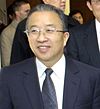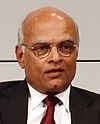
India, officially the Republic of India, has full diplomatic relations with 201 states, including Palestine, the Holy See, and Niue. The Ministry of External Affairs (MEA) is the government agency responsible for the conduct of foreign relations of India. With the world's third largest military expenditure, second largest armed force, fifth largest economy by GDP nominal rates and third largest economy in terms of purchasing power parity, India is a prominent regional power and a rising superpower.
The Five Principles of Peaceful Coexistence are the Chinese government's foreign relations principles first mentioned in the 1954 Sino-Indian Agreement. Also known as Panchsheel, these principles were subsequently adopted in a number of resolutions and statements, including the preamble to the Constitution of the People's Republic of China.

The Doha Development Round or Doha Development Agenda (DDA) is the trade-negotiation round of the World Trade Organization (WTO) which commenced in November 2001 under then director-general Mike Moore. Its objective was to lower trade barriers around the world, and thus facilitate increased global trade.
The Agra summit was a historic two-day summit meeting between India and Pakistan which lasted from 14–16 July 2001. It was organized with the aim of resolving long-standing issues between India and Pakistan.
Pravasi Bharatiya Divas is a celebratory day observed on 9 January by the Republic of India to mark the contribution of the Overseas Indian community towards the development of India. The day commemorates the return of Mahatma Gandhi from South Africa to Mumbai on 9 January 1915.
The political status of Kosovo, also known as the Kosovo question, is the subject of a long-running political and territorial dispute between the Serbian government and the Government of Kosovo, stemming from the breakup of Yugoslavia (1991–92) and the ensuing Kosovo War (1998–99). In 1999, the administration of the Autonomous Province of Kosovo and Metohija was handed on an interim basis to the United Nations under the terms of UNSCR 1244 which ended the Kosovo conflict of that year. That resolution reaffirmed the territorial integrity of Serbia over Kosovo but required the UN administration to promote the establishment of 'substantial autonomy and self-government' for Kosovo pending a 'final settlement' for negotiation between the parties.

The Sino-Indian border dispute is an ongoing territorial dispute over the sovereignty of two relatively large, and several smaller, separated pieces of territory between China and India. The first of the territories, Aksai Chin, is administered by China as part of the Xinjiang Uyghur Autonomous Region and Tibet Autonomous Region and claimed by India as part of the union territory of Ladakh; it is mostly uninhabited high-altitude wasteland in the larger regions of Kashmir and Tibet and is crossed by the Xinjiang-Tibet Highway, but with some significant pasture lands at the margins. The other disputed territory is south of the McMahon Line, in the area formerly known as the North-East Frontier Agency and now called Arunachal Pradesh which is administered by India. The McMahon Line was part of the 1914 Simla Convention signed between British India and Tibet, without China's agreement. China disowns the agreement, stating that Tibet was never independent when it signed the Simla Convention.
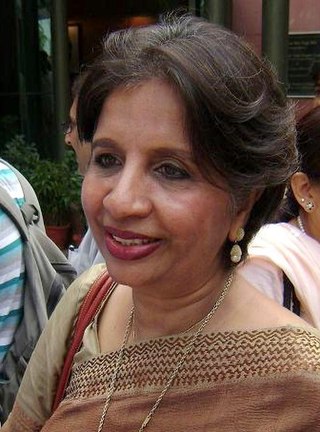
Nirupama Menon Rao is a retired civil servant of 1973 batch Indian Foreign Service cadre who served as India's Foreign Secretary from 2009 to 2011, as well as being India's Ambassador to the United States, China and Sri Lanka during her career.
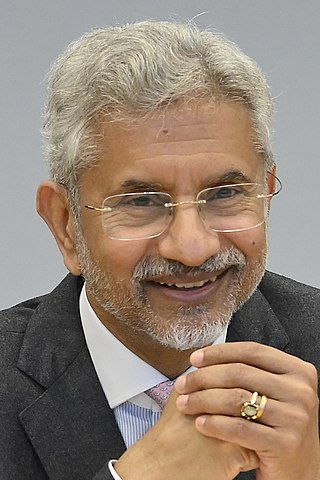
Subrahmanyam Jaishankar is an Indian diplomat and politician serving as the Minister of External Affairs of the Government of India since 30 May 2019. He is a member of the Bharatiya Janata Party and a Member of Parliament in the Rajya Sabha since 5 July 2019. He previously served as the Foreign Secretary from January 2015 to January 2018. He became the second ever diplomat to be appointed as India's External Affairs minister, after Natwar Singh.

India-Zimbabwe relations are bilateral relations between India and Zimbabwe.
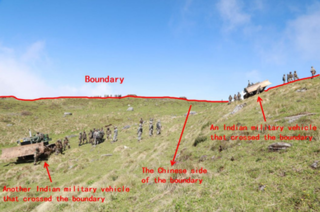
The 2017 China–India border standoff or Doklam standoff was a military border standoff between the Indian Armed Forces and the People's Liberation Army of China over Chinese construction of a road in Doklam, near a trijunction border area known as Donglang, or Donglang Caochang, meaning Donglang pasture or grazing field, in Chinese. On 16 June 2017 Chinese troops with construction vehicles and road-building equipment began extending an existing road southward in Doklam, a territory that is claimed by both China and India's ally Bhutan.

Beginning on 5 May 2020, Chinese and Indian troops engaged in aggressive melee, face-offs, and skirmishes at locations along the Sino-Indian border, including near the disputed Pangong Lake in Ladakh and the Tibet Autonomous Region, and near the border between Sikkim and the Tibet Autonomous Region. Additional clashes also took place at locations in eastern Ladakh along the Line of Actual Control (LAC).
In early May 2020, troops of the People's Liberation Army and Indian Army engaged in melee at locations along the notional Line of Actual Control (LAC), the disputed boundary between China and India. It escalated on 15/16 June 2020 resulting in deaths on both sides. Indian sources reported the deaths of 20 Indian soldiers and casualties of at least 45 Chinese soldiers. China reported 4 deaths. On 7 September, for the first time in 45 years, shots were fired along the LAC, with both sides blaming each other for the firing. Indian media also reported that Indian troops fired warning shots at the PLA on 30 August.

The Border Peace and Tranquility Agreement is an agreement signed by China and India in September 1993, agreeing to maintain the status quo on their mutual border pending an eventual boundary settlement. The Agreement on Military Confidence Building Measures, 1996, pursuant to the 1993 agreement, incrementally details the military confidence building measures to be implemented that would ensure no-war. The Protocol for the Implementation of Military Confidence Building Measures, 2005 further discussed modalities to implement the confidence building measures.

The Agreement on the Political Parameters and Guiding Principles for the Settlement of the India-China Boundary Question is an agreement between the India and China signed on 11 April 2005. The agreement is a direct outcome of the Special Representative (SR) mechanism that had been set up through a 2003 agreement.

The Working Mechanism for Consultation and Coordination on India–China Border Affairs (WMCC) was set up through an India-China agreement in January 2012 for improved institutionalized information exchange on border related issues. The mechanism was first suggested by Wen Jiabao in 2010. It was finalised at the 15th round of special representative talks in January 2012.

The Joint Working Group (JWG) was the first official bilateral administrative mechanism formed post the 1962 boundary war by India and China to discuss the boundary question with the aim of finding a solution. It was officially announced in a joint press communique in Beijing on 23 December 1988. A total of fifteen meetings of the JWG were held between 1989 and 2005. The last meeting was held on 30–31 March 2005.

The 2+2 Ministerial Dialogue is a diplomatic summit that has been held every year since 2018 initially between the Minister of External Affairs or Foreign Minister, and Defence Minister of India with the Secretary of State and Secretary of Defense of the United States to discuss and work on common issues of concern to improve and strengthen India–United States relations.



